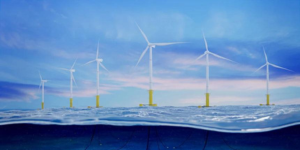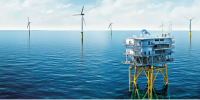1 min read
Wind Farm Array Cable Risk-Based Assessment and Analysis
Kate Aguilera Nov 3, 2023 11:25:06 AM

Introduction
A client approached us with concerns over the integrity of the cables on a large UK wind farm they operated.
They intended to develop a risk-based inspection plan (RBI) and had a good library of data from performing route surveys of the cables. However, they needed to understand which cables were most at risk so that integrity management activities could be appropriately targeted, and so Jee was tasked with conducting an array cable risk assessment.
Analysis
The first part of our assessment involved an OrcaFlex analysis of two cable bell-mouth spans and a mid-route span on the seabed. Scour profiles and span lengths were modelled for a representative cable span arrangement as well as for a worst-case scenario. This analysis gave us maximum tensions, minimum bend radii (MBRs), and curvatures which were then used to rank each cable with a risk of spanning, cable exposure, and third-party interaction.
Results
The analysis identified the high-risk cables within the windfarm. We could then present our client with indicative physical cable properties from modelled spans, a table of risk-ranked cables, and guidance on the acceptability of each risk.
As a result of this assessment the client could plan and prioritise their future survey and remedial activities, and make a case to their board of directors for the importance of continued cable integrity management.
Our extensive experience of the challenges associated with subsea cables helped us provide the client with an understanding of the most likely risks to their cables and avoid unnecessary remediation and additional survey expenditure.



